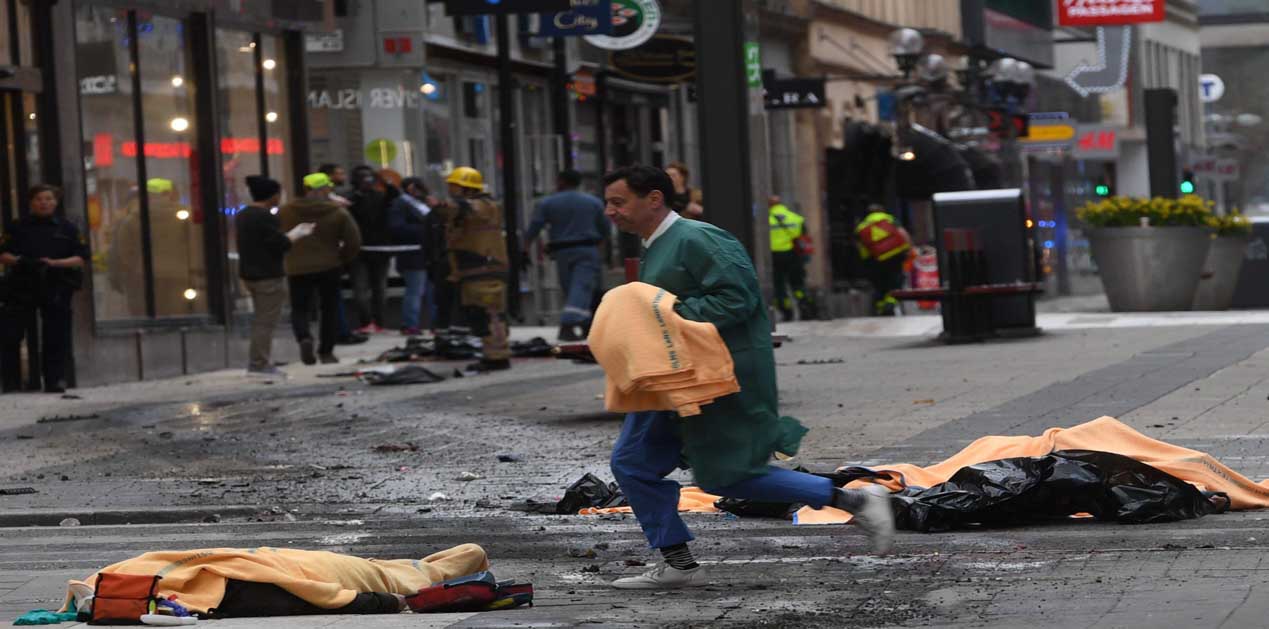The anti-Daesh military campaign for the liberation of Mosul in Iraq, which was kick-started in October last year, showed some significant advancement, beginning with the recapture of the town’s eastern neighbourhood by late January this year. Within the next couple of months the Iraqi Security Forces (ISF) and other coalition allies even managed to reach the outskirts of western part of Mosul, despite all the difficulties and resistance from Daesh militias. Undeniably, in this phase of the war against the terror outfit, Daesh has been fast losing manpower as well as financial resources due to the intensified operation. It is apparent that as the campaign further progresses, as it is planned, the terror organisation’s ambition to establish a ‘caliphate’ is progressively getting doomed, at least in the territorial sense.
While Mosul is projected to be of “existential importance” to Daesh, its continuous attempts to claim a firm control on itis assessed as nothing but a “propaganda play” to capture and retain the attention of foreign fighters, like-minded terror outfits, and support and sympathy from all over the world. But even with the looming defeat in Iraq, and very soon in Syria, Daesh’s footprints are not going to be wiped out easily in either of these countries, nor in other parts of the world. Already, it is noticed that they are going underground and resorting to high profile acts of terrorism, a twin development that will sustain its relevance for years to come. Its ideology and modus operandi for attacks will continue to haunt the international community.
Regional Perspective
Notwithstanding the advancing military operation, Daesh is continuously showing its prowess to carry out attacks inside Iraq and Syria, that too, in and around the capital cities of Baghdad and Damascus respectively. In most cases, Shiite establishments have remained the outfit’s main targets, and this reflected its sectarian overtone in the region where divisions based on this issue is getting wider alarmingly. The recent twin attack against Egypt’s Coptic Christians can be looked from this angle. The claim of responsibility by Daesh was not surprising as the outfit has been trying to import violence of this nature to Egypt as it faces defeat in Syria and Iraq. The outfit’s ability to conduct such sophisticated carnages at regular interval of time suggests that it is likely devoting more time, resources, and manpower on Egypt, which might worsen the situation in the days to come. Equally worrisome development is the gradually rising instances of attacks in those places (particularly in Iraq) which were earlier liberated during 2015-2016. Reports have surfaced of Daesh rebuilding “networks and capabilities”, in areas, such as Fallujah, which was recaptured by the ISF in June last year. Suicide bombings in cities like Tikrit are also an example of the militia’s activities. Besides, very little is known about the whereabouts of those who escaped from their previously-held territories. Under these circumstances, it would be premature to conclude that the ability of Daesh, both as a terrorist organisation and the ideological fountainhead, though diminished, have not run out of steam.
As the war progresses in Iraq and Syria, political and security problems are likely to exacerbate further. Whether one likes it or not, this outfit as managed to bring together a number of regional and international players together for a joint military operation, and formation of alliances (with their own vested interests). As in the past, the United States (US) and Russia are jostling for supremacy or hegemony. Similar is the case with Iran and Saudi Arabia which are wielding influence by arming their proxies in Syria and Iraq, all in the name of fighting Daesh. For Turkey, involvement of Syrian Kurds along the northern borders, and that of Kurdish Peshmerga fighters inside Iraq are equally disturbing developments. This is because of the long-standing ambition of the Kurds to establish their own territorial sovereignty. Following the recent referendum that went in favour of the current Turkish President, Recep Tayyip Erdogan, discussion have begun about his gaining more power that he is likely to use to crack down on Islamists and other Kurdish separatists. However, it is yet to be seen whether there will be any changes in his policies towards fighting terrorism in the region as a whole. In Iraq, there are already concerns being raised about the Kurdistan Regional Government (KRG) in the north moving to “extend its boundaries” in the near future, and this will create further rifts with the Iraqi government, which time and again, has showed vehement resistance to such separatist objectives of the Kurds. As a result, Iraq, after the anticipated fall of Daesh, whenever that happens, is heading to further chaos.
Another aspect that cannot be discounted is the technical skills of the Daesh fighters to manufacture their own arms and ammunitions, which was reportedly discovered recently during Mosul operations. This was followed by another revelation about drones in the hands of this outfit, notwithstanding not so sophisticated nature of the finished produce. Components used in the making of such drones are readily available in markets frequented by common people; therefore, procurement is not a difficult task. As it is, the outfit has been brandishing the techniques to manufacture bombs through their online contents, and even managed to recruit a few individuals who have been inspired by them. But now, as the foreign fighters are returning home, they are carrying along with them these expertise and the possibility of imparting the skills to other like-minded people cannot be ruled out. Such transfers of ideas and expertise fit well with the rising phenomenon of lone actors who have, in recent times, emerged as serious threat to be reckoned. Today’s recruits, who are now taking homebound journeys with battlefield experiences, are going to be recruiters of tomorrow. But owing to the increasing surveillance by security apparatuses, they will lie low and their activities will be more covert.
International Perspective
The impact, direct or indirect, of the penetration of the influence of Daesh is noticeable in different countries through varied manifestations. Beginning with the brazen coordinated attacks in France in November-2015, countries, including France, Belgium, Turkey, the United Kingdom, Pakistan, Afghanistan, Bangladesh, etc., had witnessed Daesh-linked terror incidents. At this juncture, when this outfit is under tremendous pressure in West Asia, it is increasingly looking towards the Af-Pak region to expand its foothold. The recent attacks in Pakistan and Afghanistan have triggered a major concern about the expansion of Daesh’s influence in these countries. Alongside these, Northern Africa and Central Asia are other potential areas for extension of its activities. Although a direct linkage with the outfit’s leadership in Syria is yet to be ascertained, the Bhopal-Ujjain blast in India was also possibly an attack carried out by Daesh-inspired radicalised individuals.
In the light of this, the present wave of radicalisation in South and Southeast Asia seems to be going in the favour of this outfit which is constantly on the lookout for alternate bases of operation. Therefore, even in the absence of a caliphate in the territorial sense, there is ample scope of the radicalised ideology to live on. Radicalised individuals and likeminded terror outfits world over, which have already pledged allegiance to Daesh or been inspired by it, are likely to play on local issues. For instance, immigration and refugee policies in Europe and the US, Muslim insurgency in southern Thailand, Uighur problem in China, Rohingya issue in Myanmar, age-old extremist problems in Southeast Asian countries (Indonesia and Philippines), Israeli-Palestinian conflict and Hindu-Muslim divide in India, will remain some of the most important factors that will continue to facilitate radicalisation and recruitment in terror groups. In the worst-case scenario, in order to continue their struggle, Al-Qaeda will likely remain a fall-back option for many terrorists who are now in the ranks of Daesh.
In the light of the above trends, in the days ahead, one cannot rule out small-scale attacks by lone individuals in different theatres. There have been enough evidence to show how such radicalised elements have in the recent past carried out horrendous acts of terror. While all of them were not ‘lone wolves’ in the real sense, there is a fair possibility that outfits like Daesh or Al-Qaeda would instigate such attacks to maintain their relevance in the extended region through such strikes against soft targets to create a fear psychosis amongst the people. The London-attack on 22 March appears to be one such case which was inspired by Daesh and should be seen as a clear signal of the unpleasant shape of things to come. Similarly, vehicle borne attack on the street of Stockholm and bomb explosion in a train in St. Petersburg in early April also indicate that terror planning is becoming less sophisticated and is also getting more complex to detect. At the moment, knives and vehicles are apparently the two most effective ‘weapons’. Unfortunately, there are no best-fit measures to stop that. This is where the propaganda of Daesh, particularly in the form of publications, such as Rumiyah, becomes significant. Furthermore, the growing nexus between petty criminals, smugglers, human traffickers and radicalised people, due to which the latter find less difficultly in procuring weapons and raising illegals financial sources, has added to the problem. As mentioned aptly by an analyst, “…this is also an age of terror where those deranged enough to commit these deeds need take no instructions from, or even communicate directly with, the leaders of a terror ‘franchise’ such as Isis or al-Qaeda”.
While the coalition campaign will continue striking inside Syria and Iraq, the differences between the major powers regarding their targets will remain. The recent US airstrikes in Syria which resulted in heightened tension with Russia is one such case. In the light of this, it is doubtful as to how effectively these powers can fight terrorism through coordinated efforts.
Regardless of the fate it is going to meet physically in Syria and Iraq in the coming days or months, Daesh will get morphed into a virtual caliphate. The presence of tech-savvy leaders, radicalised ideologues and supporters will ensure its sustenance amidst the intensifying military measure. It is this extremely radicalised online community which is going to pose major security challenges hereafter. Daesh has transformed itself to an ideological threat from being a mere terror outfit. How to effectively counter its radical narratives, is yet to be discovered. Even as analysts and war strategists wait for the ultimate fall of the caliphate dream of Daesh, the global community should brace itself for more ‘vehicle and knife’ attacks.
Image Source: https://metrouk2.files.wordpress.com











Post new comment